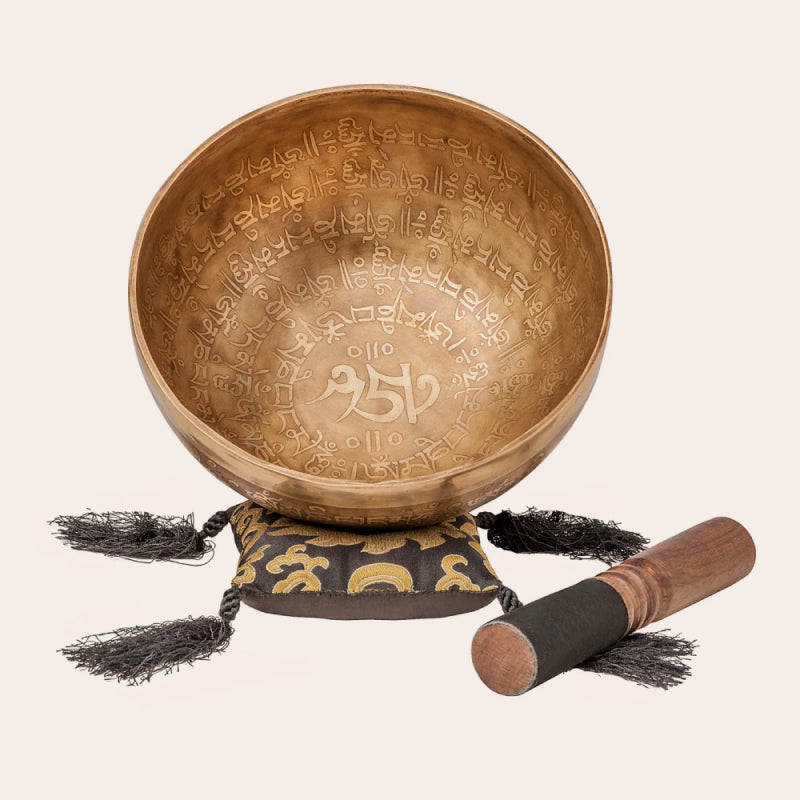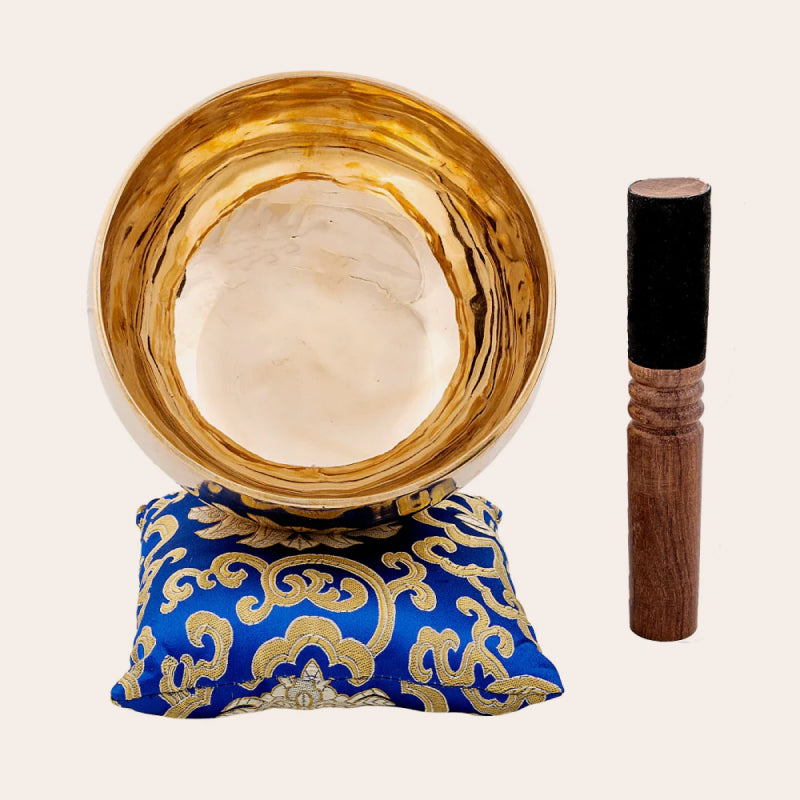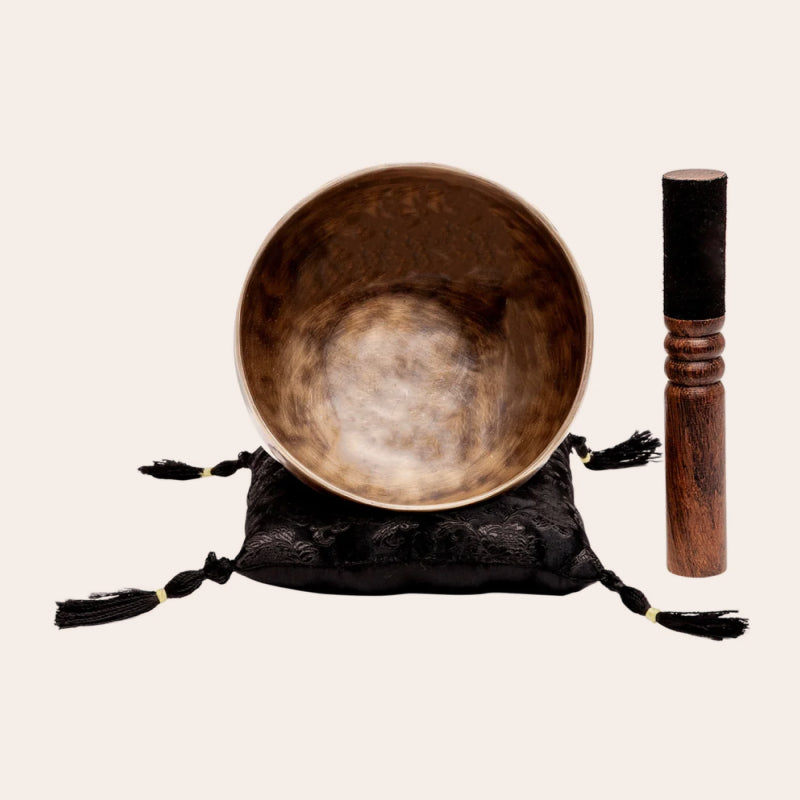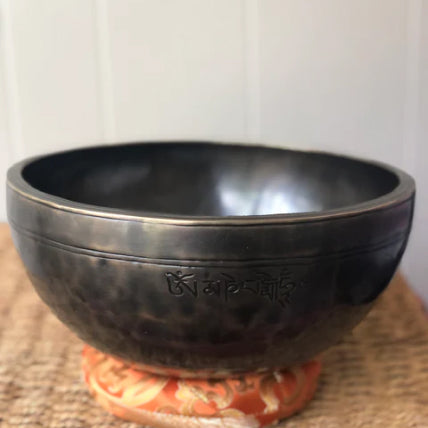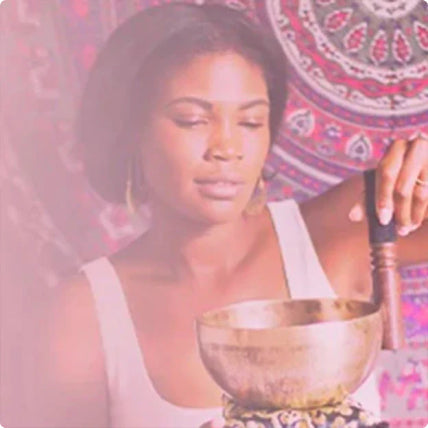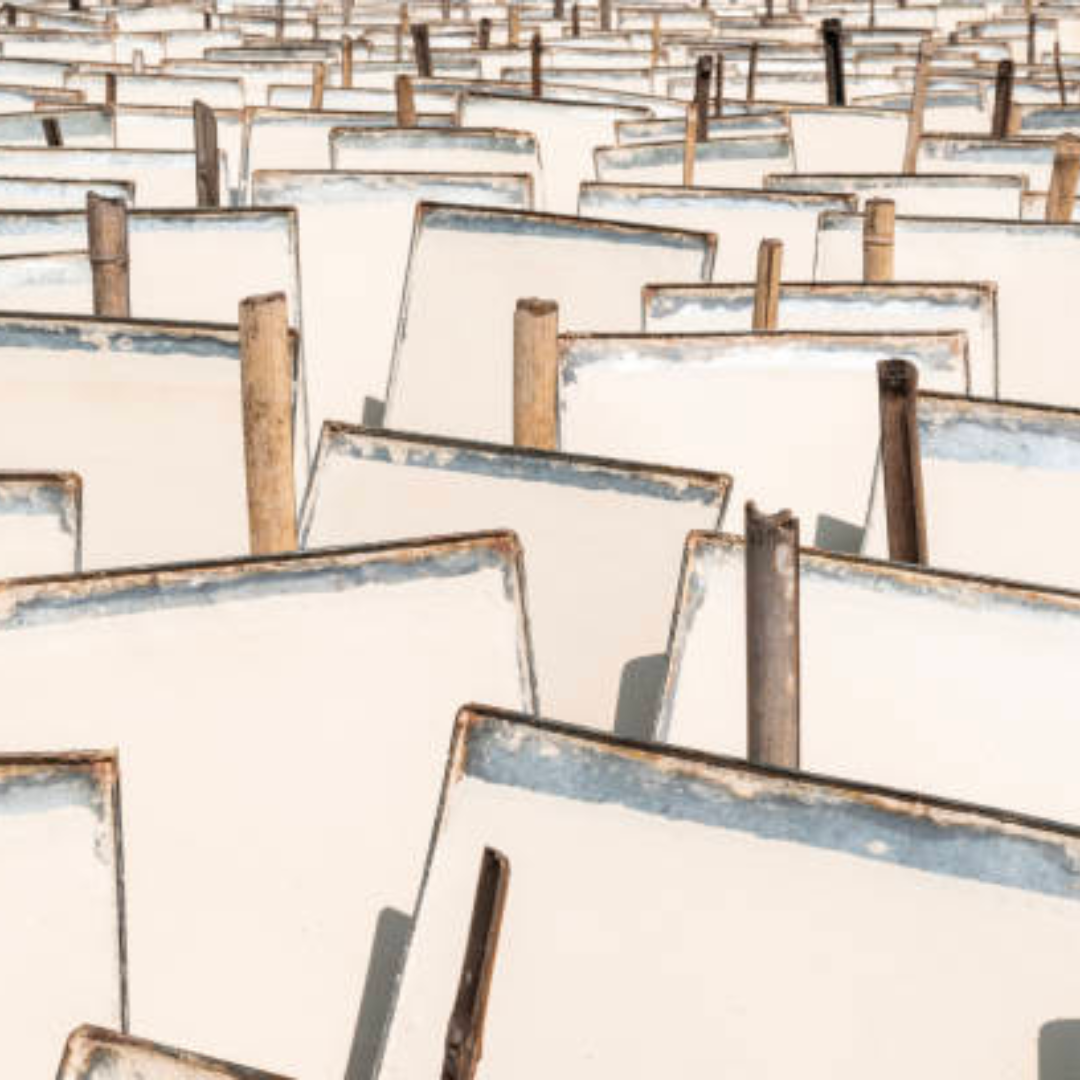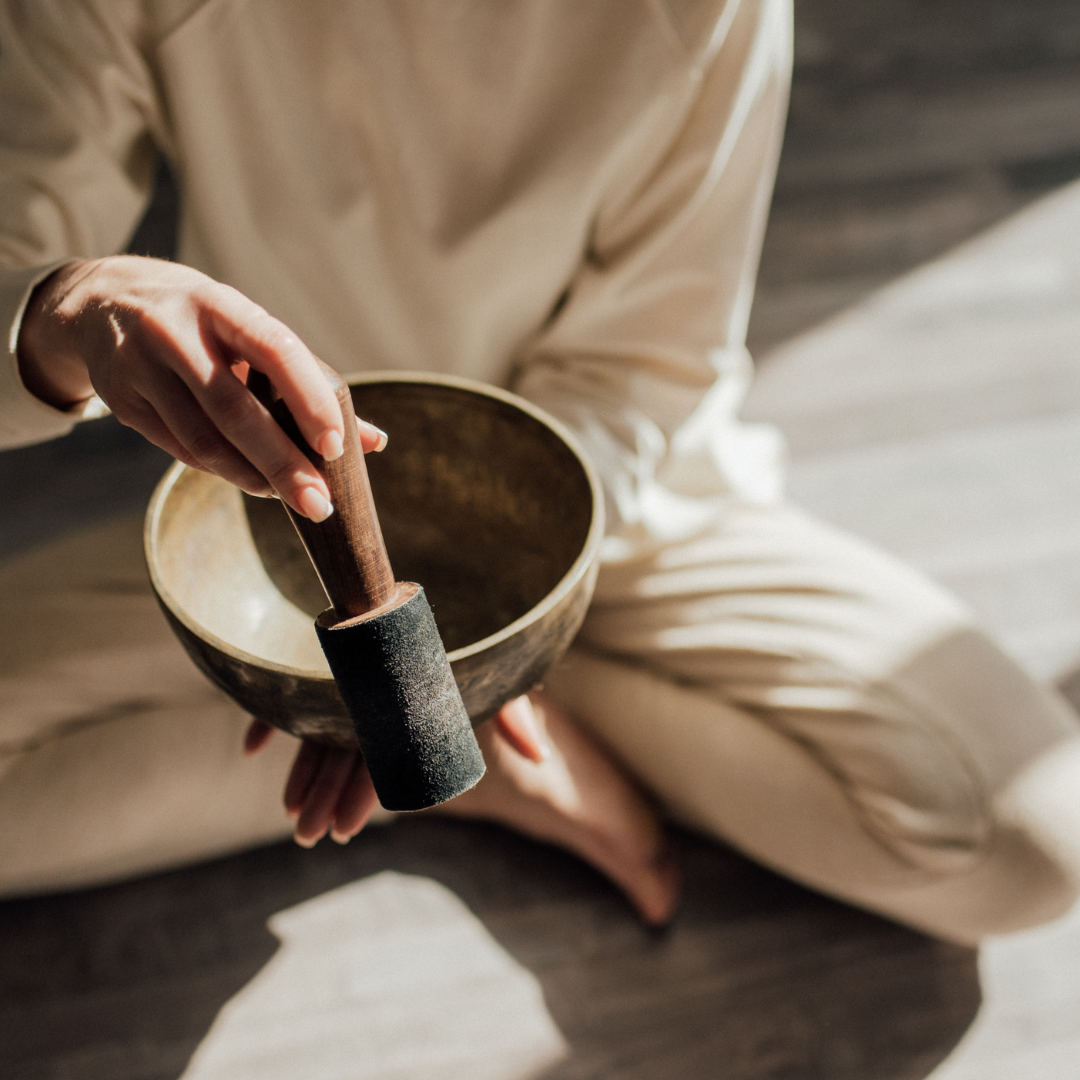The richness of the sound from a Tibetan Singing Bowl comes from a special bronze allow, created with specific copper to tin ratios.
Bronze singing bowls are a mix of copper and tin. You can get antique, handmade, and handmade hammered bronze bowls. Bronze tibetan singing bowls have a wider range of harmonic overtones than singing bowls made from other materials, like crystal (and the overtones are the special part).
Continue reading find out all you need to know about bronze singing bowls, their sounds, history, and ways to use them.
Bronze Tibetan Singing Bowls: History And Uses
While Bronze isn’t as costly as gold or silver, it is still a valuable copper and tin alloy. Bronze singing bowls bear a coppery look with the iconic golden color.
Bronze bowls are composed of tin and copper, making them sturdier and more durable than their counterparts.
After the seven sacred metals I described in the history of singing bowls, bronze bowls became quite popular. Interestingly, they still are today. Despite many articles and organizations promoting bowls of "7 auspicious metals," in our exhaustive historical search over the last 8 years, we've found that this is myth.
Nearly 100% of singing bowls DO NOT contain 7 metals, nor does the blend of 7 metals add anything to the sound experience of a bowl.
That’s why most traditional, vintage, antique, and expensive singing bowls are Bronze.
You can get genuine handmade and hammered bowls at the Ohm Store by shopping the collection here.
Handmade bronze bowls from Himalayan regions like Nepal, India, and Tibet are crafted based on traditional methods by indigenous artisans who are expert craftsmen.
All bowls here are made in Nepal, made in collaboration with our long-standing partners outside of Kathmandu.
Hammered and handmade bronze bowls contain physical imperfections; they will have hammering marks and dark spots from the fire. They aren't perfectly symmetrical. The irregular shape comes from manual hammering techniques, which adds lifelong character to these special items.
How To Use Bronze Singing Bowls?
With a history dating back 5,000 years, singing bowls are one of the oldest acoustic healing techniques currently known. Each singing bowl material makes a new sound, and sound texture.
For instance, bronze singing bowls are different from brass bowls, aluminum and crystal bowls. There's also several ways to play these bowls.
First, the basic way to get acquainted with a singing bowl sound is by gently tapping. You can do so on the sides or rim of the bowl early in the morning. The gong beat technique is the best way to understand how much pressure you should apply to the bowl.
Many refer to this as "inviting the bowl."
Once you understand the resonance of your bowl, go ahead and start rimming the bowl’s mouth with the mallet. Gentle pressure is applied here to ensure the sound doesn’t fade off or die.
To understand more about the techniques of using singing bowls such as Bronze, head over to our article on singing bowl playing techniques.
But when is the best time to use a bronze singing bowl? Consider using a bowl early morning, as a meditative way to start your day.
Meditating or doing yoga poses like the sun salutation before/after using the bronze bowl will fill you with empathy, care, love, gratitude, compassion, and energy.
Bowls of these type are a wonderful adjunct to your current meditative and spiritual practices.
Apart from meditation and yoga, you can also awaken the energy of a bronze singing bowl using aromatherapy.
If you’re a fan, you may already know diverse ways to draw in on herbal aromas’ healing vibrations.
Two to consider are essential oils and smoking cleansing herbs.
Finally, you can charge your favorite crystals with a bronze singing bowl. Because Bronze is a spiritually revered alloy, it’s good for setting intentions with crystals.
To do this, take your crystal and place it next to the bronze singing bowl. Then, play the singing bowl for a few minutes while visualizing your intention. That’s it!
How Do You Clean A Bronze Bowl? Tips To Take Care Of A Bronze Bowl
Whether you have a handmade or an antique bronze bowl, bronze bowls require thorough care. First off, Bronze can tarnish easily because it contains copper.
So, if you’re into water-charging, always clean the bowl to remove moisture after every session. Water-charging isn’t the only thing that can rust bronze singing bowls.
When you touch the bowl, you also leave a long trail of natural oils, dirt, grime, and moisture on the singing bowls. So, always pat down the bowl after touching them.
Alternatively, leaving an absorbent cloth inside the bowl during storage is good if you live in a humid place.
The truth is bronze bowls can last many lifetimes when taken care of. But even with the best care, it’s common for a few patches of black or green tarnish to appear.
If this is your bronze bowl, get a soft cloth and warm water, and clean the bowl. In most cases, the tarnish may remain. The good news is that it won’t damage your bronze bowl’s sound or healing energy.
The rule of thumb is always to keep your bronze bowl dry. Keep a pile of dry clothes to wipe down your bronze bowls after each use.
Bring The Resonance Of Bronze Singing Bowls To Your Home!
Handmade tibetan singing bowls from The Ohm Store carry a lifetime guarantee.
Want to know how to choose? Read on here, or click below to browse the collection.

